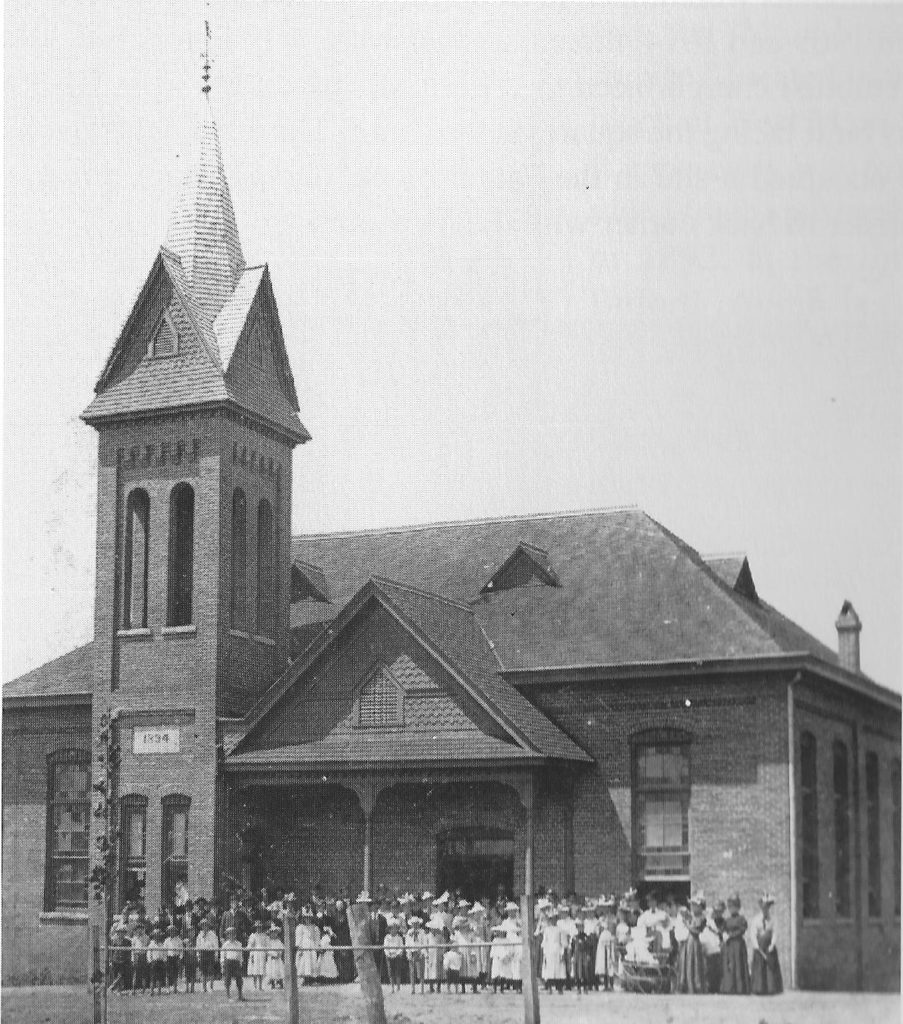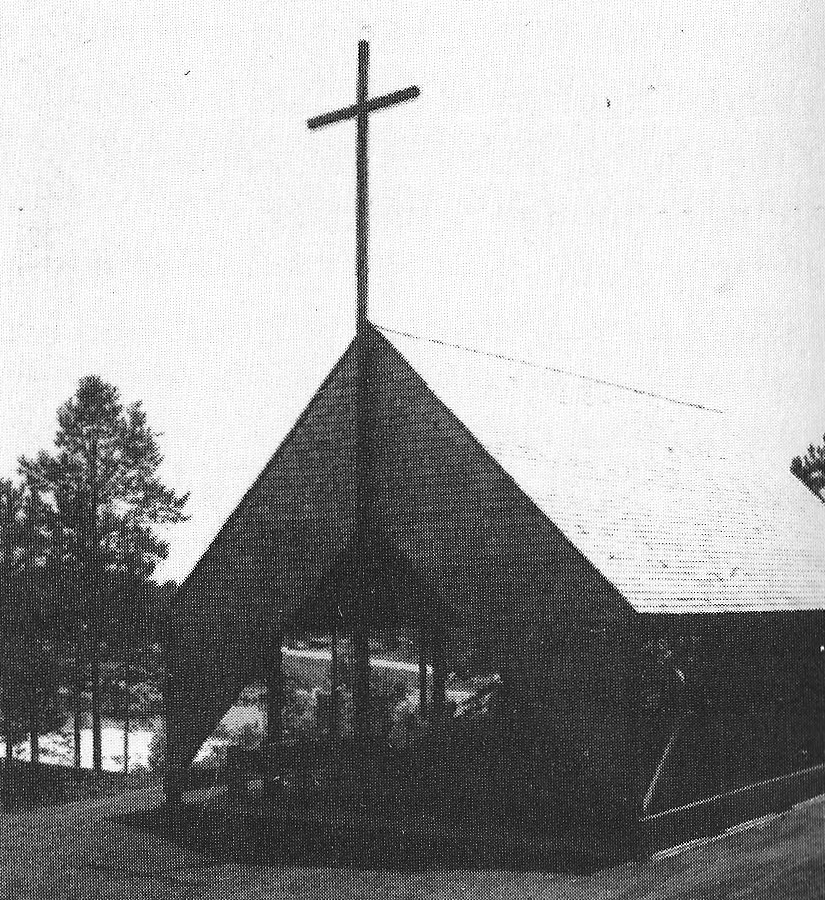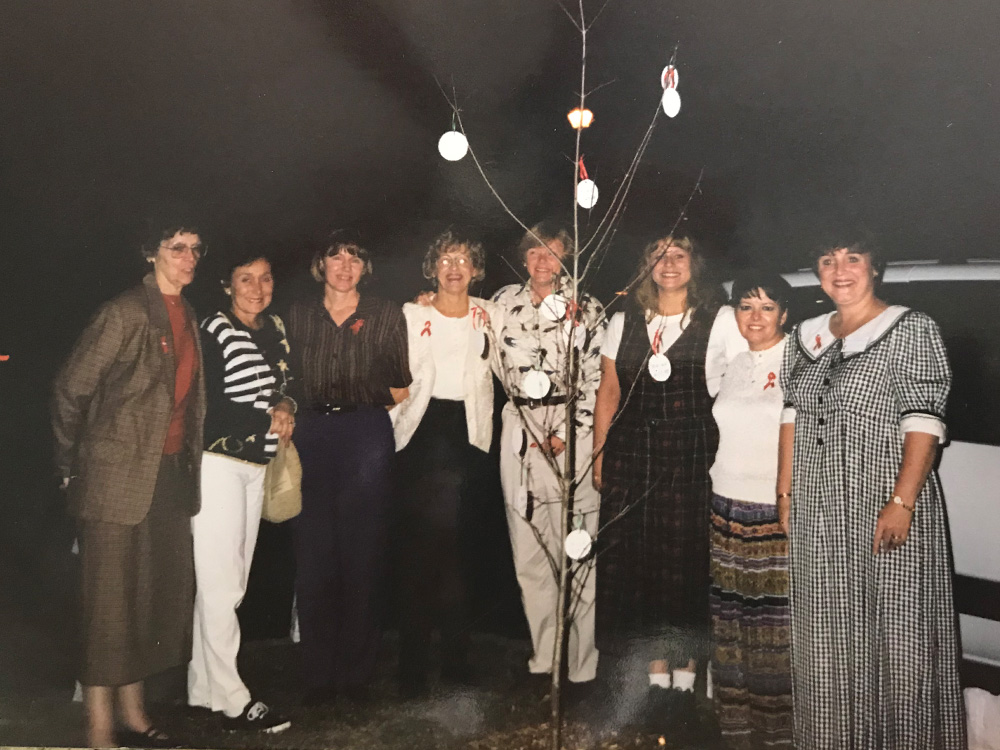150 years of ministry
Fun facts and historical images of community growth in Buford, Georgia compiled from The Buford First United Methodist Church: A History by Handsel Grady Morgan
1871
Established six years after the American Civil War, the Methodist Episcopal Church South* became the first organized church in Buford, Georgia. With 26 charter members, it held services in the same log cabin used for the town’s first school.

1872
1875
The City of Buford incorporated.
The church founders raised $400 to construct a new building on the corner of Church and Jackson Streets near the cemetery. This building was used by other church groups and served as a town hall and auditorium for public assemblies.

1894
The Methodists built their own large brick structure on Scott Street, facing the square, at a cost of $8,000.

1896
BFUMC established the Epworth League for 53 youth. It became the Methodist Youth Fellowship in 1940 and UMYF in 1968 when the Methodist Church merged with the Evangelical United Brethren.

| 1926 | The current sanctuary was built on the corner of Main and Hill Streets. Three brothers in the Allen family donated the land and matched all contributions toward construction. It cost $80,000, and the first dollar was given by an African-American grave digger. The church paid off the loan in 1935. A copper box was set inside the church’s cornerstone. It contains a Bible, the church Discipline, a Methodist Hymnal, and a list of members. Members also enclosed private envelopes with family histories and photos. |
| 1930s | Buford became known as the “Depression Proof Town” as its leather industries, headed by the Bona Allen family, thrived, selling shoes, horse collars, saddles, and harnesses nationally and internationally. Bona Allen Inc. reached its peak employment of 2,200 in 1932. BFUMC greatly benefitted from the financial and volunteer support of the Allen family. |
| 1934 | BFUMC and the Baptist Missionary Society co-hosted a federally funded sewing project that provided temporary employment in BFUMC’s basement for 16 women. They mended old clothing and quilts that were then distributed to needy families. |
| 1934 – 35 | The BFUMC Adult Department sponsored the Big Bethel Choir of Atlanta’s “Heaven Bound.” At the time, the musical production was acclaimed as the “greatest Negro play in America.” |
| 1941 | The day of the Pearl Harbor bombing, Rev. Delma L. Hagood preached his first sermon at BFUMC. During the war, he and other church members sent letters each week to all 103 members who served in the armed forces. Only three didn’t make it home. The government took over the shoe factory, allowing local women to work, which saved the town and the church from financial ruin. |
| 1946 | In February, BFUMC hosted a special welcome home service for returning veterans. A bronze memorial plaque listing all the men who served in the war was dedicated and still hangs in the narthex. |
| 1949 – 51 | BFUMC supported the formation of the Sugar Hill Methodist Church. |
| 1962 | BFUMC partnered with the Buford Youth Center to reopen and update the city pool. Members managed the pool and served as lifeguards the first two years after it reopened. |
1963
BFUMC established the Lake Lanier Ministry in partnership with Jack Beachem, owner of Holiday Marina. The first service was at 8:45 a.m. in May. The Lake Lanier Holiday Chapel was erected in 1965.

| 1963 | BFUMC opened for prayer and meditation for days following the assassination of President John F. Kennedy. The church also held a memorial service. |
| 1972 | Mother’s Morning Out established. |
| Mid 70s | BFUMC supported the formation of the Level Creek Church. The Buford pastors conducted weekly worship services at both churches. |
| 1973 | BFUMC bought a strip of land along Moreno Street behind the parsonage for $12,500. A fund was established to develop the land as a recreation area. On July 14, 1994, the area was consecrated. It featured picnic tables, a barbeque grill, and two tennis courts that were also used for basketball and skating. |
| 1974 | BFUMC established the Thrift Shop with Mrs. Dot Beard as its first manager. |
| 1981 | BFUMC created a fund for the 140 employees that were left without jobs when a fire destroyed the tannery. |
| 1984 | The BFUMC Preschool established. |
| 1992 | Headed by Milbourne Joye, BFUMC formed the Young at Heart ministry for senior adults. Still going strong, the monthly gatherings feature lunch and a program with frequent out-of-town trips to points of interest. |
1995
BFUMC initiated the first AIDS Awareness program in the area. It was a ministry that provided information to the general public and supported AIDS victims and their families. On December 1, 1998, Buford First UMC hosted an AIDS Awareness Service. Members placed names of those they knew with AIDs on a tree planted in the parking lot.

| 1996 | Rev. Diana (DeDe) Leetch became the first female pastor of BFUMC. |
| 2017 | The Christian Life Center was dedicated March 5. |
| 2020 | Most in-person activities and worship services were suspended from March 13 to September 27 during the height of the Coronavirus pandemic. Our first online service was March 15 via Facebook. Church members continued to feed children through its Sack Kids Hunger program while wearing masks and gloves. |
* Beginning in 1844 until the late 1930s, issues of slavery and church procedures caused a division in the Methodist church in the United States, leading to the designation of North and South conferences. The name “Methodist Episcopal Church South” appears on the front of the church building as it was built before the 1939 unification. In that year, the Methodist Episcopal Church, the Methodist Episcopal Church South, and the Methodist Protestant Church united to form The Methodist Church. A resolution for reunification had been introduced at the North Georgia Conference as early as 1916, but it was 23 years before unification was accomplished. The present United Methodist Church resulted from the union of The Methodist Church and the Evangelical United Brethren in 1968.